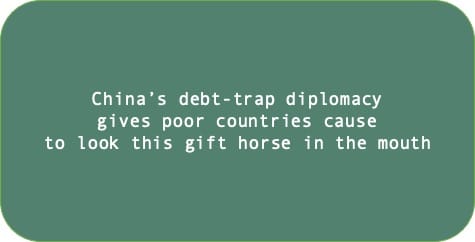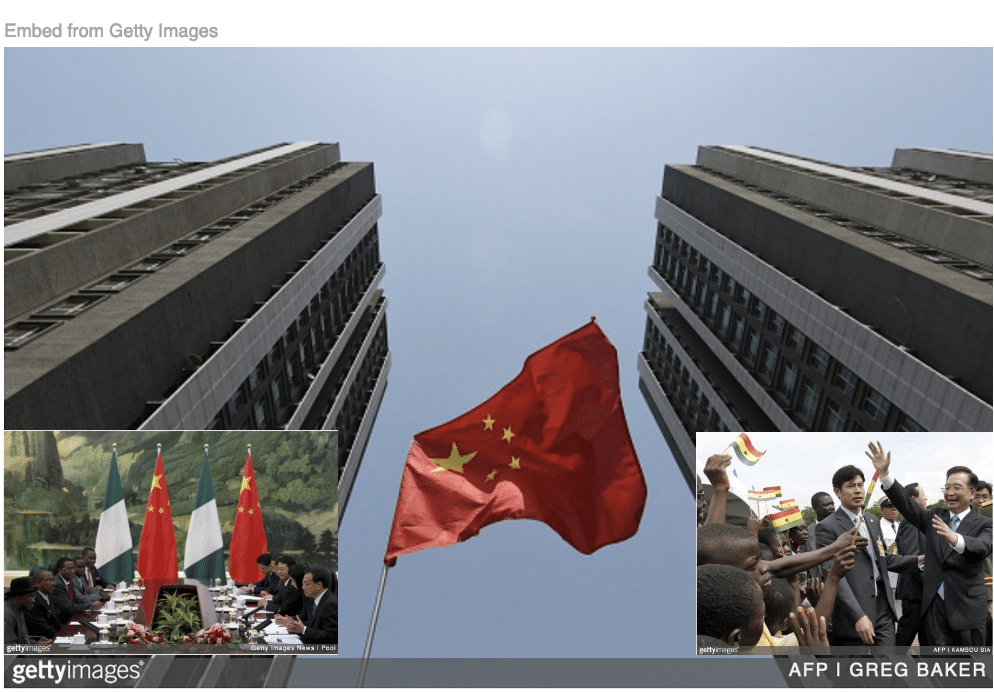
China colonizing the developing world
China is colonizing the developing world. It’s doing so by getting countries hooked on debts like cartels get people hooked on drugs.
My mother country, The Bahamas, is among those countries. So I know firsthand the effects of this unwitting addiction. But I’ve been sounding the alarm far and wide. Here are the titles of just a few commentaries in this respect:
- “China Buying Political Dominion Over the Caribbean (Latin America and Africa)!” February 22, 2005
- “World Beware: China Calling In (Loan-Sharking) Debts,” February 2, 2010
- “China Putting Squeeze on The Bahamas. Your Country Could Be Next,” October 22, 2010
- “Countries Queuing Up to Become as Indebted to China as US,” September 15, 2011
- “South Africa Joins the Ranks of Countries Selling Its Sovereignty to China,” October 3, 2014
- “China Buying the Global Influence Russia and US Fighting For,” October 16, 2016
Given that, you’ll understand why this comes as no surprise:
China is ‘colonising’ smaller countries by lending them massive amounts of money they can never repay. … Some are calling it ‘debt-trap diplomacy’ or ‘debt colonialism’ – offering enticing loans to countries unable to repay, and then demanding concessions when they default. …
Last March, ex-Secretary of State Rex Tillerson said Beijing encouraged ‘dependency using opaque contracts, predatory loan practices, and corrupt deals that mire nations in debt and undercut their sovereignty’.
(The Sun, August 17, 2018)
This report focused on the squeeze China is putting on Sri Lanka and Djibouti. China is forcing them to cede control of deep water ports to help it “expand its military footprint.”And that’s what I predicted it would do over a decade ago.
Similar reports will be written about China doing the same to other indebted nations. It’s only a matter of time. No doubt, countries throughout the Caribbean, Africa, and Eurasia are vulnerable. But those linked to China’s famous “Belt and Road Initiative” are even more so.
The so-called ‘Belt and Road Initiative’ (BRI) aims to improve trading and transport links between China and the world, mostly through infrastructure investments. It promises to revive the fortunes of ex-Soviet states.
So far, China is estimated to have underwritten over $900bn of loans — some on concessionary terms, many on commercial terms — in 71 countries, ranging from Poland to Pakistan.
(The Economist, April 19, 2018)
China’s cash vs. America’s arms
But you have to give it to China. Loaning billions for infrastructure development is a very effective way to win friends and influence countries. And China has been able to do so because it spends relatively little on its military. I even hailed it for doing so in “Smart China Spending Less on Military; Stupid US Spending More,” March 6, 2017.

By contrast, the United States and Russia spent trillions throughout the developing world during the Cold War (1947-1991). But they were using weapons to win friends and influence countries. Yet they have little to show for all that money today.
Meanwhile, China is buying up political influence while grooming military allies. It is also creating captive markets for its goods. And, in due course, those markets could dwarf the US market China is so vested in today. #GrandStrategy!
Still, developing countries should beware of China’s Faustian largesse. For a cautionary tale, they need only look at Ecuador. After all, China’s culture-vulture approach to mining for minerals and drilling for oil is devastating its Yasuni National Park. That has China replacing the US oil company Chevron/Texaco as that country’s most-favored foreign pillager.
Alas, the Ecuadorian government granted China the right to clear huge swathes of the Amazon. But China is not only destroying some of the most ecologically diverse rainforests on the planet.
It’s also displacing many indigenous tribes. That includes uprooting trees and contaminating waters those tribes depend on to survive and despoiling ancestral land where they bury their dead. China is doing all that to extract oil to fuel its megalodonian economy for just a few years.
The struggle between exploitation for development and conservation for heritage is existential. Indeed, it defines the fight to combat climate change.
Yes, I’ve been in the vanguard of those championing the cause of indigenous people and the planet. I refer you to such commentaries as “Ecuador’s Indigenous People Fight to Reclaim Ancestral Land,” March 23, 2005, and “Amazonian Indians Suing Chevron for Billions,” May 5, 2009.
At long last, developing countries are wising up. They are structuring China’s investment to protect their sovereignty.
According to a Bloomberg report today, they are now making it difficult for China to acquire even minority and passive investments in three areas: critical technology, infrastructure, and businesses that handle personal data. #BewareTheGiftHorse!